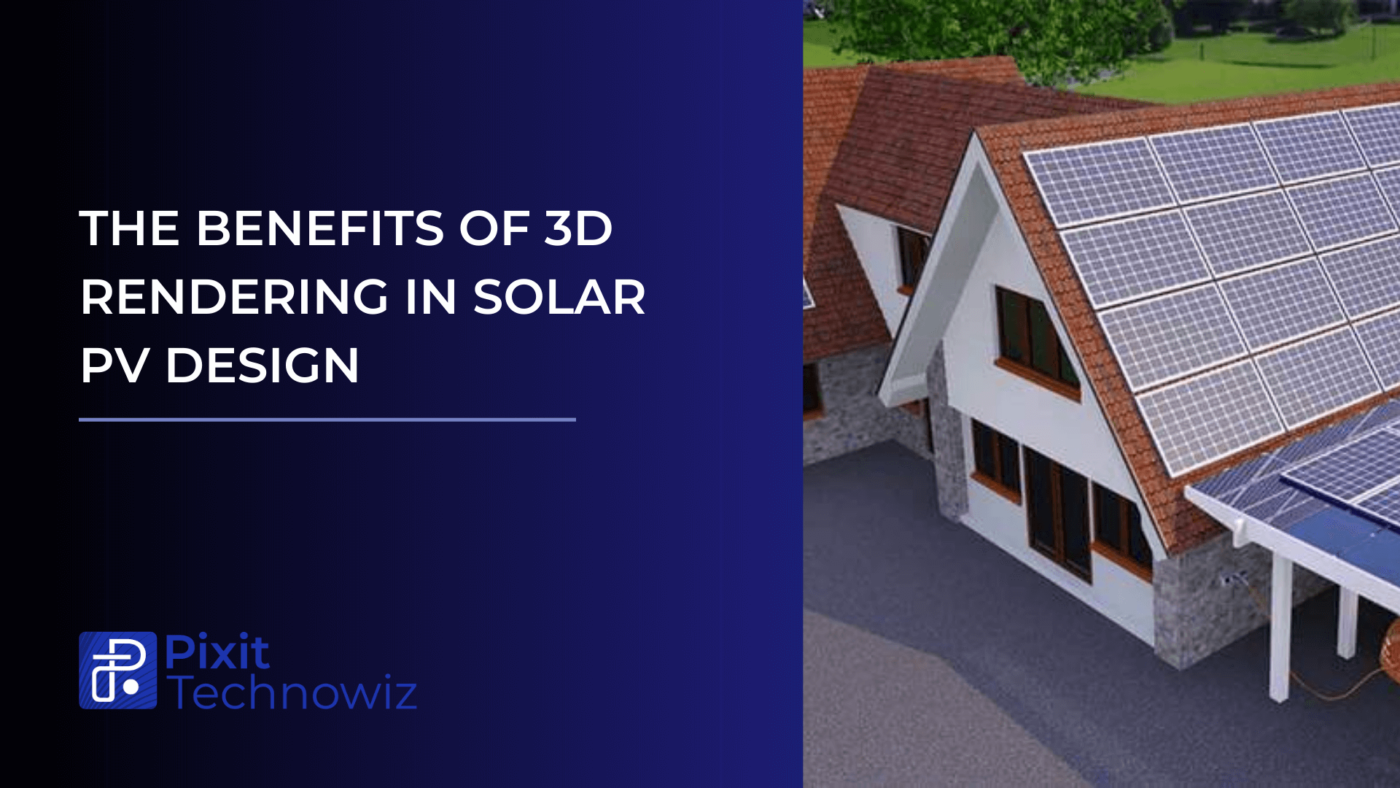Introduction
In recent times, the use of 3D rendering has grown increasingly widespread in solar PV Design. 3D rendering permits designers to create precise, detailed, and realistic renderings that show solar PV arrays, which allows users to comprehend better the spatial connections between the components of the system and their surrounding environment. We’ll discuss the benefits and potential applications of 3D rendering for Solar PV Design.
Understanding the Impact of Shading on Solar PV Systems
First, 3D rendering can provide an improved understanding of the effect of shading on solar PV systems. Shade can have a significant impact on the energy output of the solar PV system, and it’s essential to spot any possible shading issues before the installation process begins. With 3D rendering, engineers can develop precise representations of the surroundings, which include nearby trees, buildings, and other obstructions. They can then simulate the effects of shading on the PV solar system. This way, they can spot potential problems and optimize the system’s layout to ensure maximum energy efficiency.
Creating Detailed Visualizations for Presentation Purposes
Additionally, 3D rendering can be used to create precise visual representations that show solar PV panels for display for presentation purposes. Traditional blueprints and drawings are difficult to comprehend for non-technical users. 3D renderings offer a more accessible and enjoyable way to communicate design ideas. Using 3D renderings, designers can produce accurate and precise visualizations for solar PV systems that precisely depict the system’s design and performance. These renderings are helpful to stakeholders and customers alike to envision what the end product will look like and to make informed choices regarding the layout.
Enhancing the Design Process by using 3D rendering
3D rendering can help in optimizing your design processes. It usually allows designers to explore different design possibilities rapidly. Using 3D renderings, designers can develop multiple designs for solar PV systems. Through this, they can play with different layouts and configurations and then compare the results to find the most efficient design. Through this, they can improve the system’s performance and cut expenses by reducing the amount of equipment required.
Conclusion
Ultimately, 3D rendering has been a valuable tool for Solar PV Design. Its capability to produce precise renderings for solar PV systems can help optimize designing processes. This helps detect potential shading issues and communicates design concepts to non-technical parties. As technology evolves and improves, rendering is likely to play a more significant part in designing and installing solar PV systems.
Contact our experts, who have decades of experience working with 3D Modeling Services for Solar PV Design. Contact us today and receive a 3- Days free trial!

